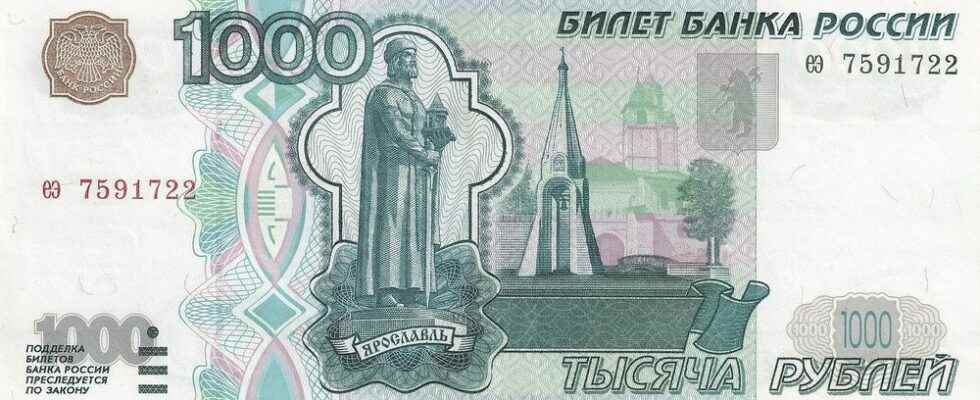1019. Yaroslav the Wise becomes Grand Prince of kyiv. His reign is considered the apogee of Kievan Ruthenia, which began in the 9th century, with a cultural flowering (architecture, frescoes, etc.). His daughter Anne married the King of France, Henry I, in 1051.
Yaroslav the Wise, depicted on a Ukrainian banknote.
The Express
1240. The Mongol invasions ravage the east of the European continent. These “Tatars” besiege and then loot kyiv. Already undermined by the quarrels between princes, Rous’ comes to an end and the capital, for centuries to come, will be nothing more than a cultural and religious center.
1340. Poland is gaining a foothold in western Ukraine. Its influence will continue to grow, until the uprising of the Cossacks of 1648 and the creation of an autonomous regime, the Hetmanate, on the banks of the Dnieper, in central Ukraine, between Poland and Russia.
A statue of Ukraine’s national hero, Cossack Bohdan Khmelnytsky, in front of the golden domes of Saint Sophia’s Cathedral in Kyiv.
afp.com/Sergei Supinsky
1772. Poland is divided between the Central Powers and Russia. Austria recovers Galicia, the last Polish possession in Ukraine. Russian authority extends over the rest of Ukraine and will be total from the end of the century.
1917. The fall of tsarism shattered the Russian Empire. The People’s Republic of Ukraine is created, then overthrown by a coup, before being restored. This short period of national independence ended in 1921 with the total conquest of the country by the Red Army of Lenin, the new master of Russia.
Supporters of the Ukrainian People’s Republic demonstrate in kyiv in 1917.
The Express
1919. The Ukrainian Soviet Socialist Republic is proclaimed and will be integrated into the USSR at the official birth of the latter, in 1922. A form of “Ukrainization” is favored in education, culture and local institutions is initiated, before being stopped by Stalin, who fears all nationalism.
1932-1933. The Holodomor, or “extermination by starvation”, claimed four million lives across the country. Determined to bring the Ukrainian peasantry to heel and accelerate collectivization, Stalin orchestrated these vast famines.
1991. The USSR is falling apart. Proclaimed in August, Ukraine’s independence was confirmed by a favorable vote by 90.35% of the population in December. The former communist ruling class retains the reins of power and the country remains in Moscow’s orbit.
2014. Ten years after the “orange revolution”, that of 2014 begins a frank break with the Russian “big brother” to get closer to the European Union. Ukraine loses control of Crimea, annexed by Russia, and part of Donbass, where Moscow is orchestrating a separatist rebellion.
Anti-government protesters gather in kyiv on February 2, 2014.
afp.com/Sergei Supinsky
2022. The Russian army invades Ukraine on February 24, on the decision of Vladimir Putin, who denies any existence of a Ukrainian nation. Pushed back from the North of the country by the Ukrainian forces, it manages to take control of 20% of the territory, in the Donbass and in the South.
Clement Daniez
